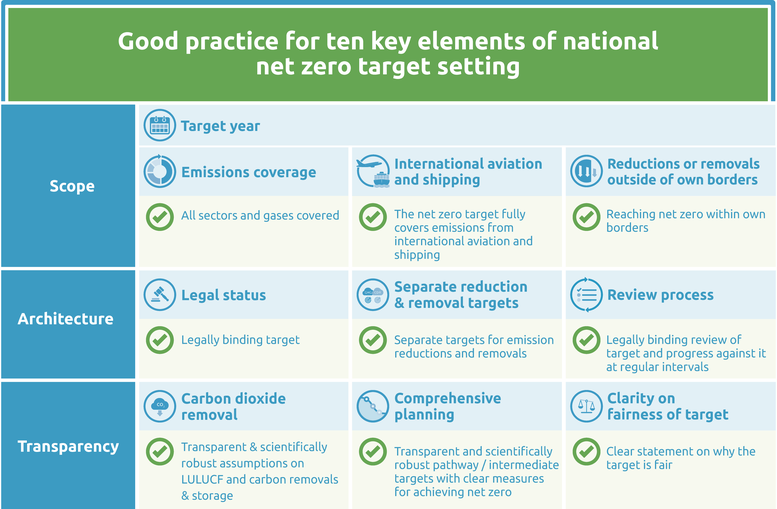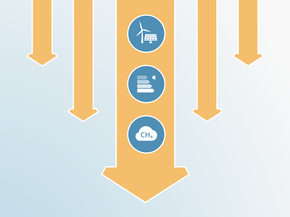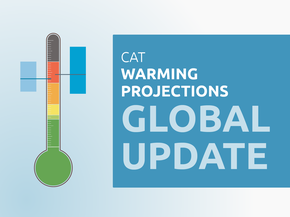Net zero targets
Summary
We evaluate the net zero target as: Poor.
Russia approved its "Strategy of socio-economic development of the Russian Federation with low greenhouse gas emissions by 2050" in October 2021 and submitted it to the UNFCCC on September 5, 2022 as its long-term climate strategy (LTS) (Russian Federation, 2021d, 2022b).
As part of this strategy, Russia has committed to reaching net zero greenhouse gas (GHG) emissions by 2060. The strategy also includes a target to reduce GHG emissions by 80% below 1990 levels by 2050, leaning heavily on negative emissions from the LULUCF sector. At the time the target was developed, Russia planned to increase the LULUCF sink from -539 MtCO2e to -1,200 MtCO2e between 2030–2050. Its recalculated LULUCF emissions mean that it has effectively already met the 2050 target.
Some of the key planned measures outlined in the strategy include the creation of economic incentives to reduce GHG emissions, a systematic replacement of inefficient technologies, and creating conditions to ensure Russian companies are competitive in low-carbon markets. At present, there is little to no action being undertaken on any of these stated policy requirements. If Russia is to align itself with the goals of the Paris Agreement, as it has stated it intends to, significant action in these areas and others will be required.
Russia released an action plan in 2021 for implementation of the strategy which details the emissions reduction policies designed to achieve the 2050 goal (Russian Federation, 2021d). The document is detailed as far as 2030, with clear policies and a quantification of each policy’s impact on emissions. However, despite being a strategy for 2050, there are very few mentions of any year after 2030.
Russia’s updated Climate Doctrine, released in 2023, serves as a high level, foundational document for Russian climate policy to be based on (Russian Federation, 2009). The Doctrine asserts Russia’s stance towards climate change, its impacts on Russia, and an overview of how Russia intends to address it. Any mention of the connection between fossil fuels and climate change in the first version of the Doctrine from 2009 was dropped. Generally, the Doctrine provides an overarching strategic vision for addressing climate change, rather than a detailed plan of how to reduce Russia’s emissions.
To improve its net zero target rating, the Russian government can consider good practice approaches shown further below including clarifying the reductions and removals projected for its 2060 target in addition to its 2050 target and including international shipping and aviation emissions under the target.
CAT analysis of net zero target
Ten key elements
Scope
- Target year – Russia aims to reach net zero emissions by 2060.
- Emissions coverage – Although the long-term climate strategy does not explicitly list all greenhouse gases covered, the document mentions that Russia aims to balance anthropogenic greenhouse gas emissions and sinks by ‘no later than 2060’. Based on this, we interpret the strategy to cover all greenhouse gas emissions. The target covers all sectors of the economy (excluding international aviation and shipping).
- International aviation and shipping – Russia provides no information on its intention to cover international aviation and shipping.
- Reductions or removals outside of own borders – Russia has not provided any information on its intention to use international offset credits to meet its net zero target.
Target architecture
- Legal status – Russia’s "Strategy of socio-economic development of the Russian Federation for low greenhouse gas emissions by 2050," which contains its 2060 net zero target, was approved via government order, akin to legislation, in October 2021 (Russian Federation, 2021d). Russia submitted its Long-Term Strategy to the UNFCCC in September 2022 (Russian Federation, 2022b).
- Separate reduction & removal targets – Separate reduction and removal targets are provided for 2030 and 2050 under Russia’s long-term strategy, but not for its targeted net zero objective in 2060. Planned removals would be as high as half of current emissions of all other sectors, meaning, that these other sectors would only have to be cut in half to meet the net zero target.
- Review process – Russia’s long-term strategy states that progress of its implementation will be monitored, and that the strategy will be updated “as necessary” (Russian Federation, 2022b). The government provides no details on what this means or what such a review would entail. Although it refers to the Global Stocktake mandated under the Paris Agreement in 2023 as a point at which the strategy could be updated, this was not done.
Transparency
- Carbon dioxide removal – Russia does not provide transparent assumptions on carbon dioxide removal. Its long-term strategy aims to increase the land sink to -1,200 MtCO2e in 2050. At the time it was written, that seemed extremely ambitious as the anticipated sink in 2050 would have been more than double the current sink. However, Russia’s updated accounting methodology has allowed it to revise the LULUCF sector’s absorption capacity, so that the -1,200 target has almost been reached. An increase of this magnitude should be transparently explained to justify it as part of the strategy to reach net zero. There is also no projection to 2060 to outline the level of reductions required to reach net zero emissions.
Russia’s accounting methodology stands in violation of a key element of international climate reporting, with the UN’s IPCC guidelines stating that only managed forests may be included in carbon accounting practices (2006 IPCC Guidelines for National Greenhouse Gas Inventories, 2006). - Comprehensive planning – Russia’s long-term emissions strategy has been backed up by an action plan, which lays out measures intended to achieve its 2050 target. While this is detailed as far as 2030, it drops off afterwards and there are few mentions of 2050 in the document nor are there quantified emissions reduction targets for economic sectors/sub sectors that can guide their respective ministry’s planning.
- Clarity on fairness of target – Russia makes no reference to fairness or equity in the context of its net zero target.
Good practice
The Climate Action Tracker has defined the following good practice for all ten key elements of net zero targets. Countries can refer to this good practice to design or enhance their net zero targets.
Further analysis
Latest publications
Stay informed
Subscribe to our newsletter





